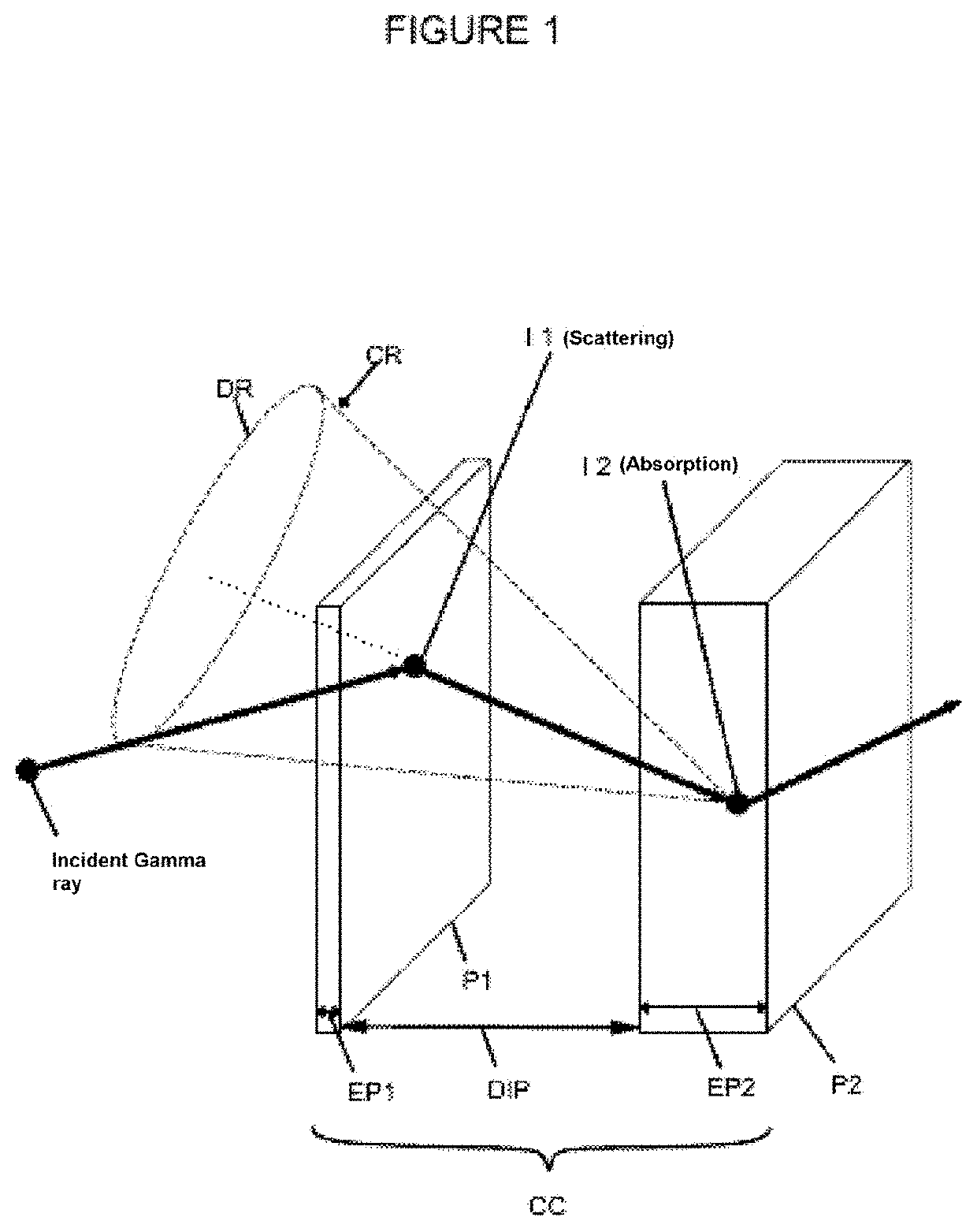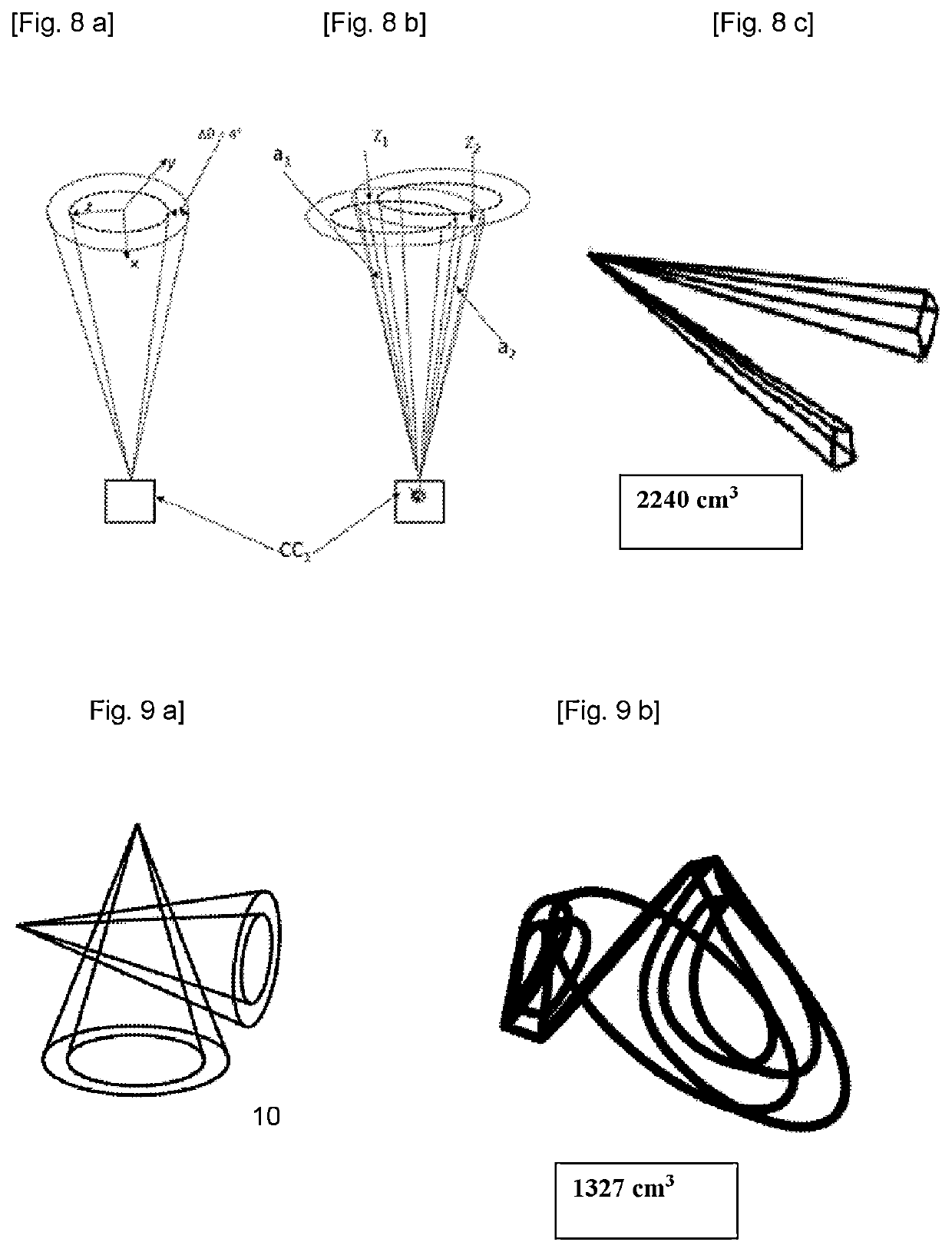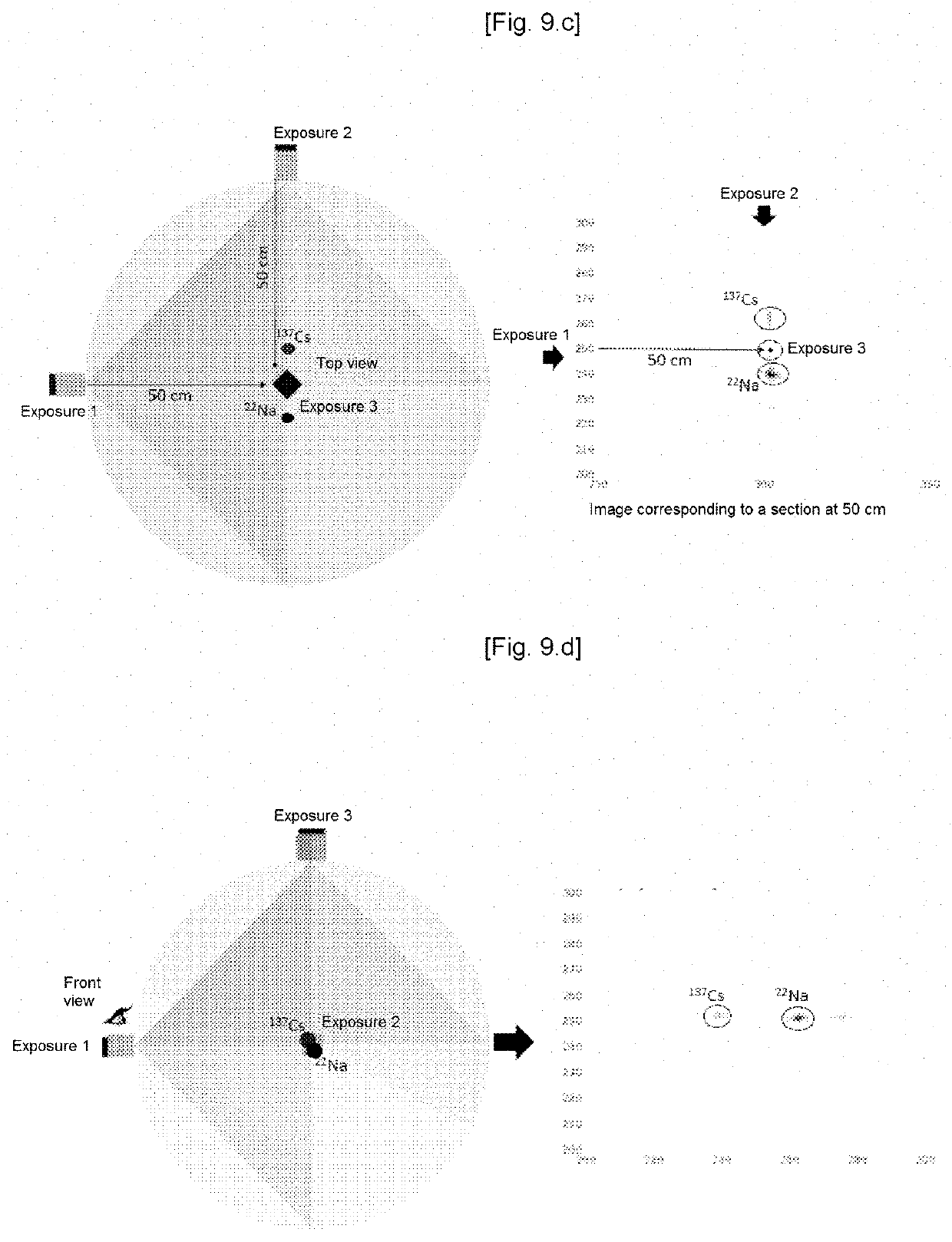Imaging method using jointly a pet reconstruction and a compton reconstruction, preferably in 3D compton
a technology of compton and reconstruction, applied in the field of gamma ray source imaging, can solve the problems of large part of the photons not being detected correctly, short life of the radio-element used for the pet, and difficult to envisage the use of the device in the context of a surgical operation
- Summary
- Abstract
- Description
- Claims
- Application Information
AI Technical Summary
Benefits of technology
Problems solved by technology
Method used
Image
Examples
Embodiment Construction
[0070]The present invention relates to an imaging system and method jointly using a PET-type coincidence reconstruction and a single-photon reconstruction at the same energy (511 keV) of the Compton 3D type. By the detection of gamma radiation implemented by a device including at least one PET type coincidence detection module. The two parts of the PET module are facing each other to make coincidence detections of pairs of photons. Said coincidence depends on a time window Δt (delta t) greater than the difference between the time of arrival t2 of the second photon detected by one of the PET cameras and that t1 of the first photon detected by the other PET camera (Δt=t2−t1). It's a system known as Time Of Flight (TOF).
[0071]In some embodiments, several pairs of PET cameras can be mounted facing each other forming a ring, arcs, etc. The purpose sought in these embodiments being that with these arrangements of PET cameras, it is possible to target large volumes and cover large surfaces...
PUM
| Property | Measurement | Unit |
|---|---|---|
| lengths | aaaaa | aaaaa |
| thickness | aaaaa | aaaaa |
| width | aaaaa | aaaaa |
Abstract
Description
Claims
Application Information
 Login to View More
Login to View More - R&D
- Intellectual Property
- Life Sciences
- Materials
- Tech Scout
- Unparalleled Data Quality
- Higher Quality Content
- 60% Fewer Hallucinations
Browse by: Latest US Patents, China's latest patents, Technical Efficacy Thesaurus, Application Domain, Technology Topic, Popular Technical Reports.
© 2025 PatSnap. All rights reserved.Legal|Privacy policy|Modern Slavery Act Transparency Statement|Sitemap|About US| Contact US: help@patsnap.com



